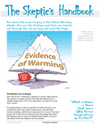|
|
The Crash Test Dummy accelerates. Australia is steaming ahead in the forced transition to unreliable energy
A lot of the reason for the growth in renewables is the Renewable Energy Target (the RET). Renewables must supply 16% of our electricity in 2018, and even more in 2019.
Strap yourself in. Buried in the AEMO summer readiness plan was the news that our intermittent renewables capacity is forecast to increase by fully 50% this year. All the renewables we had accrued in the two decade “transition” til December last year, we’ve added half again. We are already pushing the bounds of stability and setting price records, but you ain’t seen nothing yet. We are escalating the rate of change.
In toto, we have 56GW of generation of all sorts in the national grid on the east coast. The wind and solar component increased from 4GW at the end of 2017 to over 6GW by the end of 2018. But it doesn’t take much intermittent power to change the way the whole grid works.
Things are so fragile that a few weeks ago, when 240MW of reliable supply was suddenly not available for this summer, the AEMO had to issue a […]
Even the AEMO is warning of blackouts coming, because the BoM is forecasting hot, dry conditions. El Nino on the way, and I hear rumours our Snowy Hydro Dam levels are not great.
Print Email Facebook Twitter More
There’ll be blackouts this summer if nothing is done, AEMO report warns
Stephanie Dalzell, ABC News
Victoria and South Australia are at a high risk of forced blackouts this summer if no action is taken, according to the latest report by the Australian Energy Market Operator (AEMO).
Not enough supply? Put another million bucks on the BBQ:
To stop that from occurring, the AEMO has sourced emergency energy reserves, which are typically not available to the market and are only accessed when supply is not keeping up with demand.
Those emergency reserves — otherwise known as Reliability and Emergency Reserve Trader (RERT) resources — do not come cheap.
It’s only money:
The report stated that last summer emergency energy cost taxpayers in Victoria and South Australia almost $52 million.
That equated to an average of an extra $6 per household bill.
That’s nothing. The two day heatwave […]
Some days I wonder if I should spread stories that make us sound like a recidivist third-world backwater struggling to maintain our voltage. But the ABC is already smashing away.
Just when you think there couldn’t possibly be another drawback to solar panels, lo! Solar Panels are pushing up the voltage at midday often as high as 253 Volts when it supposed to be more like 230 to 240V. This means appliances are using more electricity, that makes bills even higher. It may also be breaking appliances (making other bills go higher too). We’re not really sure about that, but when that study is done, it’ll already be 1.8 million panels too late.
Non-solar users are paying for this surge (and the appliances) — for every 1% increase in voltage, the costs go up 0.7%. Then, to ice that gravy-cake, the inverters on solar panels are also shutting off at 253V, meaning that poor home owners who paid thousands are not generating power for the grid. All up, solar is bad for you, bad for them, bad for our light-globes.
The warning comes from groups running the electricity networks in Australia.
Spot the key word missing from the ABC headline […]
It’s not often we see a report that turns things on their head quite like this.
Wind turbines may cause more local warming than global cooling in the next century.
Photo: Jo Nova
If the US were to install a lot of turbines, Wind power could warm the United States by 0.24 degrees Celsius instead of cooling it, because wind turbines “redistribute heat” in the atmosphere. They mix the surface layers. (0.24C would be equivalent to two decades of recent warming.) The largest effect is at night where wind plants can warm the local area by 1.5C.
At least 10 previous studies have now observed local warming caused by US wind farms. Keith and Miller compared their simulated warming to observations and found rough consistency between the data and model.
Nick Carne — Cosmos magazine
The new studies by Keith and Miller were published in Environmental Research Letters and Joule.
Major downer. The power density of wind energy is up to *100 times* less than predicted.
The new research suggests we can’t put too many turbines to close together or the whole group become far less efficient. That means we need 5 – […]
Green genius: Pay $1400 a year to not stop any storms
Finally some veteran engineers checked the Labor Party 50% renewable plan and the AEMO “65% scenarios”. Unlike others, their study that did not involve magical assumptions that the cost of renewables would dramatically fall. Instead they used “actual costs” and found the price of electricity will rise “84%” and cheap coal power will be forced out of business (just like what we also found here). The engineers include Barry Murphy, former managing director and chairman of Caltex. Robert Barr, an electrical engineer and academic at University of Wollongong. If only Kevin Rudd had asked them in 2007.
Engineers warn of bill shock under green energy surge
Adam Creighton, Economics Editor, The Australian
Electricity bills will soar and gas and coal-fired power stations will close if the share of wind and solar generation increases dramatically, engineers have warned after analysing the nation’s energy supply.
It found bills were likely to soar 84 per cent, or about $1400 a year, for the typical household, if wind and solar power supplied 55 per cent of the national electricity market.
A quarter of Australian rooftops have solar, […]
The world still runs on coal and oil
After 20 years of subsidies, intermittent renewables account for just 3.6% of total energy generation. That’s the tiny purple sliver in the graph. Global power means not just electricity, but also fuel used in transport. And this is where wind and solar power are respectively old and slow, or modern but useless.
Someday solar powered planes might make their first round world trip in 48 hours but at the moment they need 16 months. There’s a a bit of hitch in the global energy transition.
Hello fossil wonder fuels:
Global Primary Energy, Graph, 1965-2018
Intermittent renewables are pretty useless everywhere:
Global Primary Energy, Graph, 1965-2018
Solar energy might have “made waves” and increased by an astounding 100GW last year, but it’s still irrelevant:
Oil remains the world’s dominant fuel, making up just over a third of all energy consumed. In 2017 oil’s market share declined slightly, following two years of growth. Coal’s market share fell to 27.6%, the lowest level since 2004. Natural gas accounted for a record 23.4% of global primary energy consumption, while renewable power hit a new high of 3.6%.
— Spencer […]
The advantage of communist autocrats is that they can create government havoc so much more efficiently.
The Chinese solar boom was so big it became the world’s largest solar market. It was so big it pushed up global “clean energy” investment to a record high. China became the veritable show pony of the solar spruikers: “leading the world in clean energy investment”. Mashable tells us it was so big “the solar boom could be seen from space“.
But the star advertisement for renewable glory was all based on subsidies:
The Chinese solar boom was “pretty significant”
A couple of months ago the Chinese government admitted they were cutting the subsidies to make electricity cheaper again for consumers. That hit the stock market. Now projects are being cancelled and orders are drying up for the hapless manufacturers.
The free market might be telling us something China’s solar industry is at a crossroads
“Without subsidies there’s no return on investment for over a decade, so investors and property owners aren’t interested in distributed solar. With subsidies it only takes seven years to recoup the investment,” he adds.
China’s solar manufacturers are unhappy with recent government policy changes […]
All those billions we spent and yet at 6pm, many days coal, gas and hydro provide 98% of the power Australia needs. Wind and solar are our spare bikes, the third ski, the Banana-Slicers of the National Grid (read those reviews). Just what would we do if wind and solar were all we had? — Jo
At peak time intermittent renewables often make less than 2% of total Australian electricity
Guest Post by Anton Lang (TonyFromOz)
h/t to Rafe Campion at Catalaxy
When power is required the most, wind and solar are missing almost entirely. This isn’t cherry picking of one time — peak time is the most important time on the grid, when the most power is required. The almost non-existent contribution from renewables is so common it has occurred now for seven days out of the last 14 days.
I’ve been doing a series on the Australian generation and demand curves on a daily basis for seven weeks, the totals are settling down, so that now the percentage changes are only in tenths of a percent, and consider that when it comes to total power and coal fired power, a tenth of one percent is 600MegaWattHours, so at […]
The ACCC is a powerful body created to protect consumers in Australia. Now, after ten years of poor people being forced to pay for middle and upper class solar panels in a kind of semi-secret subsidy-tax, NOW, it says maybe it is time to stop?
Go ACCC.
Competition watchdog calls for solar subsidies to be axed
Ben Packham, Sam Buckingham-Jones, The Australian
The Australian Competition & Consumer Commission’s electricity affordability report reveals the huge cost of environmental schemes across the National Energy Market, including the large-scale renewable energy target, the small-scale renewable energy scheme and solar feed-in tariffs.
The schemes add a combined $170 to household energy bills in South Australia, $155 in Tasmania, $109 in NSW, $93 in Victoria and $76 in Queensland.
The ACCC waffles some reasons:
The ACCC said the costs associated with the LRET were expected to fall significantly after 2020, and did not recommend any action to wind up the scheme before its 2030 end date. But it said the SRES, which cost $130 million in 2016-17, should be wound down and abolished by 2021, almost a decade ahead of schedule, to reduce costs for consumers.
[…]
We’re planning to spend $5,000 million on something to smooth out the bumps from unreliable generators. It is entirely unnecessary in a system where coal supplies the baseload and we have not created artificial rules forcing people to use green electrons in preference over stable and predictable ones. Most estimates of costs from wind and solar ignore the hidden costs — the destructive effect on the whole grid.
Wikipedia on Pumped Storage Hydroelectricity:
“the round-trip energy efficiency of PSH varies between 70%–80%,[4][5][6][7] with some sources claiming up to 87%.[8]
h/t Peter Rees, Michael Crawford, Ian Waters.
Even after Snowy Hydro 2.0, power will cost $90/MWh
Joe Kelly, The Australian last week:
Energy project financier David Carland — the executive director of Australian Resources Development Limited — argues that once the Snowy Hydro project is operating it will provide only partial back-up energy at a high cost.
Using Snowy Hydro’s modelling assumptions, Dr Carland’s calculations show the “levelised cost of energy” — or unit-cost of electricity over the lifetime of an asset — will deliver power significantly in excess of $90/MWh, after allowing for the cost of storage, cycle losses and the initial cost of […]
What costs $1,500m, makes no electricity, but “saves money”?
South Australia has used federal subsidies to build more wind power than it can use. They’ve spent half a billion already on diesel powered jet engines and a battery that can power the state for “minutes”. For 139 hours last year the state produced so much wind power it supplied 100% of the states electricity needs and then some, and the problem of excess electricity is only getting worse as wind generation keeps increasing and solar PV uptake is rampant.
When government rules and regs have created an inefficient, expensive problem, what do we do? More of it. A new report suggests that South Australia needs a direct transmission line to NSW which will cost $1.5b. We could spend that on a reliable generator instead, or get the government out of the way and let the private sector do it for us, but instead we need to pay for another transmission line to connect up different zones-of-subsidy-rent seekers and hope we get $30 off the bill? It’s a savings in the statistic margin of error…
South Australia didn’t even have an interconnector til 1990. Now with decentralized and renewable power they […]
Despite 20 years of non-stop propaganda and belligerent namecalling, strangely, expert green policies have achieved exactly nothing of what they said they aimed for. Coal provided 38% of our power in 1998 and it is still the same 38% in 2017. The non-fossil fuel sector has actually declined slightly as nukes decrease.
We spent billions doing exactly what was asked. Perhaps following the advice of people who think the debate is over and “denier” is a scientific term might not be the best national energy policy?
Fuel shares in global power generation for the last 20 years | BP Energy Review, 2018.
Long-term dominance of fossil fuels unchallenged
Graham Lloyd, The Australian
Global demand for coal and gas to generate electricity was back on the rise last year …
Most striking had been the failure of renewable energy to make an impact on the fossil fuels share of power generation, BP group chief economist Spencer Dale said.
“Despite the extraordinary (global) growth in renewables in recent years, and the huge policy efforts to encourage a shift away from coal into cleaner, lower carbon fuels, there has been almost no improvement in […]
It’s not even summer.
NSW has been hit by clouds and a lack of reliable coal power. Prices are soaring. In NSW the Tomago Aluminium Smelter consumes about 10% of the state’s electricity. It has been forced to switch off three times in the last week because there was not enough reserve power on the grid.
The boss of Tomago, Mr Howell, said Australia is “at a crisis point with our energy system”.
“This is not summer with extreme demand. This is the likely future of our energy grid as once reliable baseload generators exit the [NEM] and are mostly replaced with intermittent wind and solar projects with no practical storage to speak of,” Mr Howell said. “Our energy debate should not advocate either renewables or conventional thermal,” he said.
— SMH, Peter Hannam,
Aluminum pot lines can only sit idle for a few hours before they cool too far and the damage becomes permanent and wildly expensive as the aluminum becomes solid.
Renewables-fans blame the emergency on the unreliability of coal
See @TheAustraliaInstitute. Suddenly Australia is the only western nation on Earth with coal resources that can’t […]
Ladies and Gentlemen, Australia is now romping in as Star-Crash-Test-Dummy in the renewables stake.
Proportionally, we have more uncontrolled solar roof top generators than any other nation. We’re in uncharted territory: about 20% of houses in Hawaii and California have Solar PV, but in Western Australia, it’s 25%. In Queensland it’s 30% and throughout Australia we are adding 100MW a month and it’s like a whole new coal fired station every year (except it doesn’t work most of the time).
Strap yourself in! This is more useless infrastructure than anywhere else on planet Earth. The only time solar PV panels provide something we might need is at afternoon tea time in summer when airconditioners are on. So for three quarters of the year they provide electricity when we don’t need it, and for three quarters of every day they don’t even work. The rest of the time they burn capital, increase the blackout and fire risk and sit there collecting dust and hail stones.
Electricity at the wrong time is not just wasted, it’s a burden
Too much electricity bumps up the grid frequency and voltage, potentially damaging equipment and risking blackouts. Obviously we have to “manage” this flood of […]
Solar is so competitive that the Queensland government has to pour in money to keep solar developers from running away.
How much money? Who knows. Whatever it is, it’s so big, the government has to keep it a secret.
Queensland taxpayers kept in dark as they prop up solar firms
MARK SCHLIEBS, The Australian
The Queensland government is concealing its financial support for large-scale renewable energy projects, guaranteeing subsidies to solar companies that do not appear on balance sheets.
With an expert panel previously finding the government would need to spend between $500 million and $900m in subsidies to meet its 50 per cent renewable energy target by 2030, there are now calls for spending to be made public.
The government has struck four deals with major solar-farm developers, under “contracts for difference”, with floor prices nominated for the sale of their energy in order to attract finance. When the market price falls below that threshold, the government has to make up the difference.
Luckily for Queensland taxpayers — who don’t know how to spot a good investment or the energy source of the future — the Government can spend their money for […]
Spot the vested interest
The biggest competitor for hydro in Australia is cheap old coal power. Surprise me, Snowy Hydro jumped into the national energy debate a few days ago on behalf of taxpayers themselves.
With Turnbull offering five-billion-dollar gravy to build an unnecessary hydro storage battery, it is no surprise to hear Snowy Hydro pretending that Australia needs more intermittent unreliables. The more solar and wind rock the system, the more Big-Hydro is needed to stabilize the boat. The big question is why hardly any journalists or politicians seem able to spot the obvious vested interest:
Ben Packham, The Australian:
Snowy 2.0 declares wind and solar power ‘clearly cheaper’ than coal
The government-owned company building Malcolm Turnbull’s Snowy 2.0 pumped hydro project has added fuel to the energy wars by declaring wind and solar are clearly cheaper options than coal.
And if you owned Hydro stocks, you’d say that too. Coal is every generators enemy for a reason. It’s cheaper than they are.
See the tiny numbers above the columns in this graph? Those are actual settlement prices — tiny wholesale bargain sales of coal fired electrons at 1c per kilowatt hour.
May 24th, 2018 | Tags: Hydroelectricity | Category: Cost, Global Warming, Renewable |  Print This Post | | Print This Post | |
Panels are going in everywhere in Perth.
In Western Australia the uptake of solar panels has rocketed as electricity prices leaped — there’s a slow motion solar train-wreck underway. Solar PV panels are now on more than one in four houses and growing at a phenomenal rate.
The South West Grid is small, with around one million customers and a daily peak of around 2 – 3,000 MW. But the solar generation now totals as much as 1,000MW, and is growing at blistering 180MW a year. Already, there are times solar can be the largest “single” source on this grid, and the AEMO has no control over it, which is why emergency notices are being issued more and more. The AEMO suggests the answer is more batteries, but we are still subsiding the installation of these unnecessary panels making the problem worse, and electricity prices are forecast to rise another 7% this year. As readers TomOMason and TonyfromOz say, so much for cheap solar — watch out: “Batteries Not Included”. The hidden costs get you every time, and the cost of the impact on the rest of the grid is only becoming known as we do this live experiment.
[…]
For the last year everyone has been calling Tasmania the “Battery of the Nation” — Turnbull, Hydro Tasmania, government departments, the ever hopeful green press. It’s an official plan. The bright idea is to add “Pumped Hydro Storage” to the large dams already on the island state, boosting the only reliable renewable type of energy. But right now, as far as mainland Australia goes, Tassie is a No-Volt Battery.
Even Hydro Tasmania is calling itself the “Battery of the Nation”
The dirty secret is just how fragile the link is. Not only did it break for six spectacular months in 2016 — leaving the “green” state flying in squads of diesels — but its now quietly out of action again and it’s projected to be out for two months all up. The 290 km undersea cable known as Basslink is the second longest of its type in the world. It broke on 24 March 2018. It is not expected back in action til May 31. It was an accident of routine maintenance at one end.
“The equipment was damaged by a third-party contractor during routine works. There is no damage to the cable itself.”
[…]
Obviously, if you are a thirsty solar panel, Australia is the place to be. We have ready-made irrigated high quality agricultural land set to be covered with an uneconomic and unreliable solar panels.
Only collective-coerced taxpayers are stupid enough to pay for this.
It’s so silly, groups of unconnected farmers of all different kinds are rallying together to oppose the flagrant waste.
Prime agricultural land loss or booming future energy? That’s the solar planning conundrum for Victoria
Residents near Shepparton are concerned that farmland the Victorian Government has invested in under the Murray-Darling Basin Plan will be lost to agriculture as the state undergoes a solar farm boom.
Four applications for solar farms in the Greater Shepparton region that could produce up to 243 megawatts of electricity have been proposed for Tatura, Tallygaroopna, Lemnos and Congupna, and have been ‘called in’ by the Victorian planning minister.
Critics say there has been no thought put to where the solar farms are being placed and how much prime agricultural land is being lost, and while there is suitable, more arid land available close by.
At least two of the solar farms have […]
Climate Worriers have the most terrible luck. All the runes were lined up for Solar power — it is nearly free, pours from heaven, and millions of people seem to need energy “pretty often”. Plus universities and governments have gifted twenty years of free advertising about its Glorious Wonderfulness. Solar power is also used by the Celebrity Saints of Gaia thus filling fashionable, spiritual, and tribal needs. On a good day, it fills some megawatt needs too.
Despite all this, without forced payments from unwilling and unwitting non-users of solar power, investors are fleeing and the solar industry in Germany is collapsing. How can that be?!
Lawrence Solomon: Are solar and wind finally cheaper than fossil fuels? Not a chance
Financial Post
After the German government decided to reduce subsidies to the solar industry in 2012, the industry nose-dived. By this year, virtually every major German solar producer had gone under as new capacity declined by 90 per cent and new investment by 92 per cent. Some 80,000 workers — 70 per cent of the solar workforce — lost their jobs. Solar power’s market share is shrinking and solar panels, having outlived their usefulness, are being retired without […]
|
JoNova A science presenter, writer, speaker & former TV host; author of The Skeptic's Handbook (over 200,000 copies distributed & available in 15 languages).

Jo appreciates your support to help her keep doing what she does. This blog is funded by donations. Thanks!


 Follow Jo's Tweets
Follow Jo's Tweets To report "lost" comments or defamatory and offensive remarks, email the moderators at: support.jonova AT proton.me
Statistics
The nerds have the numbers on precious metals investments on the ASX
|












Recent Comments